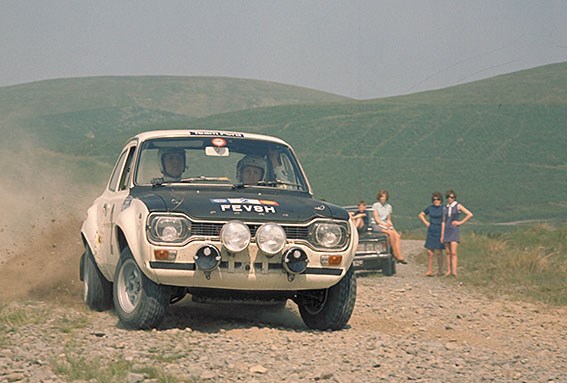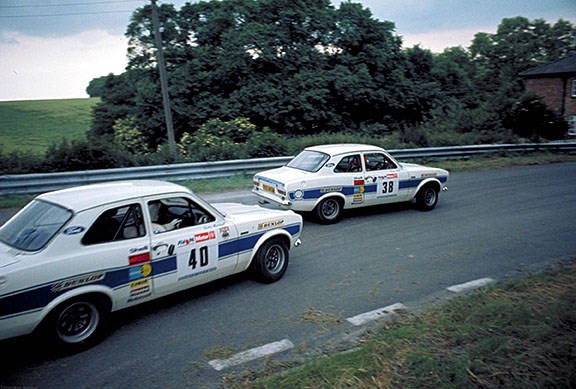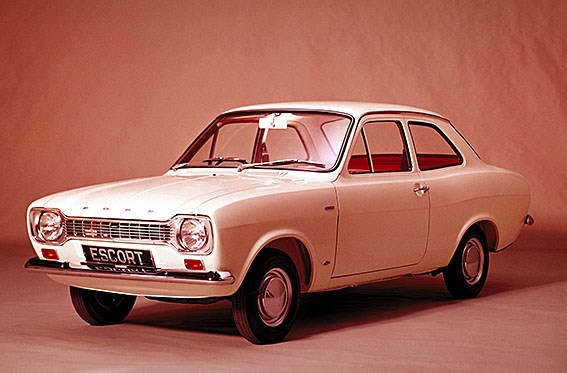Ford Escort Review: Budget classic
 Budget classic: Ford Escort
Budget classic: Ford Escort

 Budget classic: Ford Escort
Budget classic: Ford Escort

 Budget classic: Ford Escort
Budget classic: Ford Escort


|
|
Budget classic: Ford Escort
|

|
|
Budget classic: Ford Escort
|

|
|
Budget classic: Ford Escort
|
Ford's lightweight has a great race pedigree and doesn't cost a fortune to own

|
|
Budget classic: Ford Escort
|
Ford Escort
Some cars are born great, others achieve greatness. And you know what? For our money, it's the cars that have achieved greatness on their actual merits that really float our boat. I mean, a Ferrari - any Ferrari - is born with a silver spoon in its grille, right? There's a presumption (rightly or wrongly) that it'll be something special and as it ages, it automatically becomes collectable.
Fair enough, but that only makes it so much more special when something truly blue-collar comes along and, despite humble beginnings, still manages to carve a niche under the broad heading of 'collectable'. This is not tall-poppy syndrome at work either, because we still admire and covet the elderly Ferrari. But it remains that it does the soul good to see something utterly working-class also achieving immortal status.
And they don't come much more blue-collar or working-class than the original Ford Escort of the late '60s. Designed to replace the Anglia, the Mk1 was released in Europe in February '68, but it wasn't until 1970 that Australian production ramped up (local content ruled then and the Escort topped out at 85 percent) - our first Eskies hitting showrooms in March.
On paper, it wasn't (and isn't) anything to get too excited about. There was a choice of two- or four-door bodyshells (which looked very alike, to be honest) and also a choice of an 1100 or 1300cc pushrod four-cylinder engine. Interior trim was unrelentingly vinyl but you did get bucket seats and a floorshift for the four-speed manual gearbox. A three-speed auto was available if you specced up to the 1300cc engine, but back then, most people knew that small cars just had to be manuals. Thank goodness.
As a hint of what was to come in the way of special-edition models, Ford Oz also offered a model called the GT, which stuck with the 1300cc engine but upgraded it to 56kW (from 46kW - the 1100cc was just 40kW-worth). The big change was the Weber carburettor, but the GT also scored a six-gauge dashboard, torque rods for the live rear axle and stiffer suspension, so it was a fair dinkum effort rather than the decal-pack specials to which Ford later stooped.
The Escort magic, of course, lay in the fact that the little body looked sensational, with the right amount of curves and beautiful proportions. The dog-bone grille was racy and even on the skinny 12-inch wheels of the standard version, the Escort was balanced and looked like it might just handle well.
Which it did, of course, and thousands of pro and amateur rally drivers the world over can't be wrong. In fact, it was motorsport success that helped pave the way for the Escort's popularity. You could giggle at how long the 1100 took to reach 100km/h (and the 1300 wasn't much better) but when you saw and heard the full-caffeine version of the Esky with its Minilite racing wheels, big spotlights and forest flares hurtling towards you on a special stage, even Blind Freddy got the message loud and clear.
The scores of international rallying successes made people take the Mk1 Escort seriously, and it's that legacy that now makes the little fella a collectable. It was also about this point in history that Ford started to learn about halo models showering the whole line-up in a golden glow.
But it's not just those high-performance and super-rare models that are being sought out these days. Just about any Mk1 Escort is ripe for adding to a collection, although the two-door versions are both harder to find and more valuable.
The good news is that many have been re-powered either with a 1.6-litre Kent pushrod engine or even the 2.0-litre SOHC Pinto four-cylinder that powered the later Mk2 Escort. Some have been tweaked, tuned, and some even turboed, but it's fair to say that just about any Escort still around goes harder than it did in the day. Five-speed conversions are popular and there's a whole world of suspension and tyre options.
The main problem - and the thing that has killed more Escorts than Jack the Ripper - is rust. Built before rust-proofing was a perfect science, the Mk1 can rot pretty much anywhere. So beware newly painted cars and check closely for bubbles around the glass, in the doors, lower guards, roof gutters, floors, battery tray, rear quarters, bonnet edges and bootlid. Yep, that'd be everywhere, then. A favourite spot for the rust monsters is the base of (and, eventually, all of) the heater bubble on the firewall.
The interior bits and pieces are easy to find at wrecking yards and only the jewellery for the rarer stuff will be getting tricky to locate. Mechanically, it's rare to find a Mk1 that isn't some kind of grandfather's axe at best and a dog's breakfast at worst. But plenty of Escort bits are interchangeable with other Ford stuff so don't get too hung up on finding a matching-numbers car. A brake upgrade to include front discs on low-spec models is a pretty good idea, too.
Find yourself a tidy, rust-free example and just enjoy all the things that made the Escort cool in the day, and a proper working-class hero as the years went by.
TWIN CAM
Giving the whole Aussie Escort range a rev-up through aspirational, high-performance versions involved importing a model called the Twin Cam. It arrived here soon after the mainstream models (May 1970) and was, essentially, a two-door Escort with a Lotus twin-cam engine fitted. In Europe, the Twin Cam was the homologation special, but out here it was a high-end road-car version of the Mark 1.
As well as better trim, you also got full instrumentation, bigger wheels and tyres, some optional stripes, and the engine was made by Lotus in England and featured double-overhead camshafts operating two valves per cylinder. The bottom end was the old non-crossflow block bored out for a capacity of 1558cc. With 82kW, it was quite a gadget, too, even if the Lotus engine could be a bit grumpy at times and required somebody who really knew what they were doing to twirl the spanners.
As so often happens, the insurance companies of the day tried to spoil the fun, whacking a huge premium on any Escort with a Twin Cam badge. So Ford did the only sensible thing: in late 1971, it simply renamed the model the 1600GT and sliced premiums into small pieces. The two cars? Exactly the same apart from the badges. Ah, simpler times.
If you can find an unmolested Twin Cam or 1600GT now, you'll pay big money, and we heard of one for sale recently at around $30,000 which, in 10 years' time, will probably seem like a bargain.
Unique Cars magazine Value Guides
Sell your car for free right here
Get your monthly fix of news, reviews and stories on the greatest cars and minds in the automotive world.
Subscribe

.jpg)









